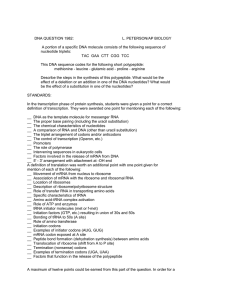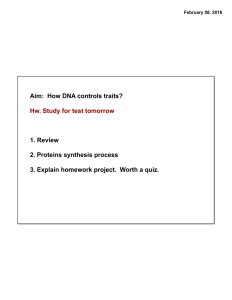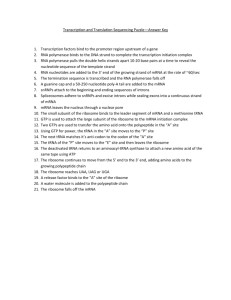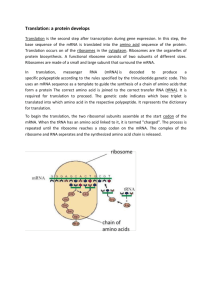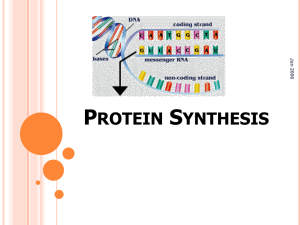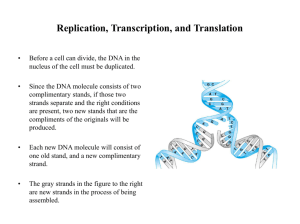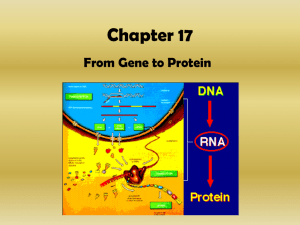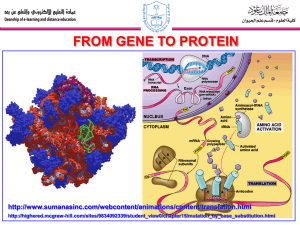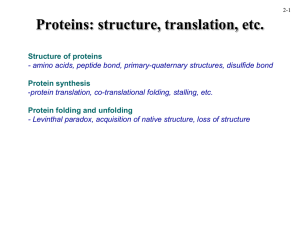Protein synthesis
advertisement
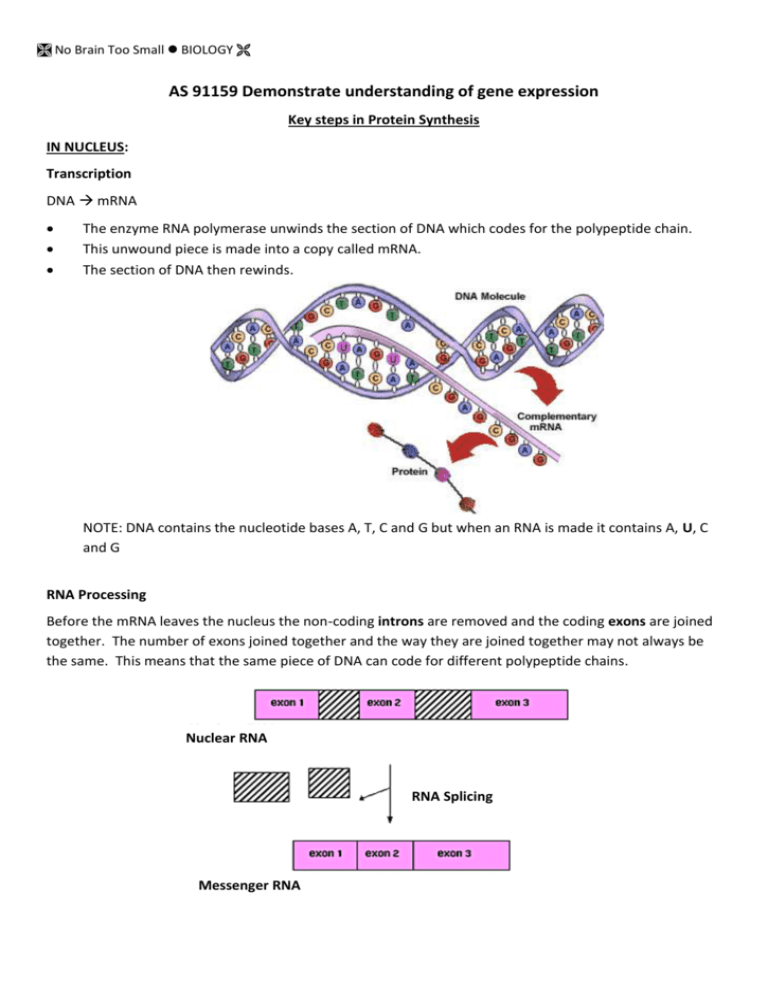
No Brain Too Small BIOLOGY AS 91159 Demonstrate understanding of gene expression Key steps in Protein Synthesis IN NUCLEUS: Transcription DNA mRNA The enzyme RNA polymerase unwinds the section of DNA which codes for the polypeptide chain. This unwound piece is made into a copy called mRNA. The section of DNA then rewinds. NOTE: DNA contains the nucleotide bases A, T, C and G but when an RNA is made it contains A, U, C and G RNA Processing Before the mRNA leaves the nucleus the non-coding introns are removed and the coding exons are joined together. The number of exons joined together and the way they are joined together may not always be the same. This means that the same piece of DNA can code for different polypeptide chains. Nuclear RNA RNA Splicing Messenger RNA No Brain Too Small BIOLOGY IN CYTOPLASM: Translation mRNA polypeptide chain The mRNA joins with a ribosome at a start codon (AUG) and covers TWO codons. tRNA bring in the correct anticodons (with their amino acids). when TWO amino acids are side by side a peptide bond forms between them. The ribosome moves along a codon, the first tRNA leaves the ribosome (without its amino acid). The next matching tRNA brings in its amino acid, peptide bond forms, ribosome moves along etc. This process of reading the mRNA and building the polypeptide chain carries on occurring until the ribosome meets a termination codon where the ribosome leaves the mRNA. Protein Folding After the polypeptide chain has been produced it is still not a functional protein, as the chain needs to be folded in a specific way. Most proteins are either fibrous and are folded in regular secondary structures, where the polypeptide chains form either a zigzag or spiral helix OR are globular. Globular are folded into a tertiary or quaternary structure. o Tertiary folding involves a polypeptide chain being folded into an irregular ball shape. o Quaternary folding involves two or more polypeptide chains being loosely held together.

